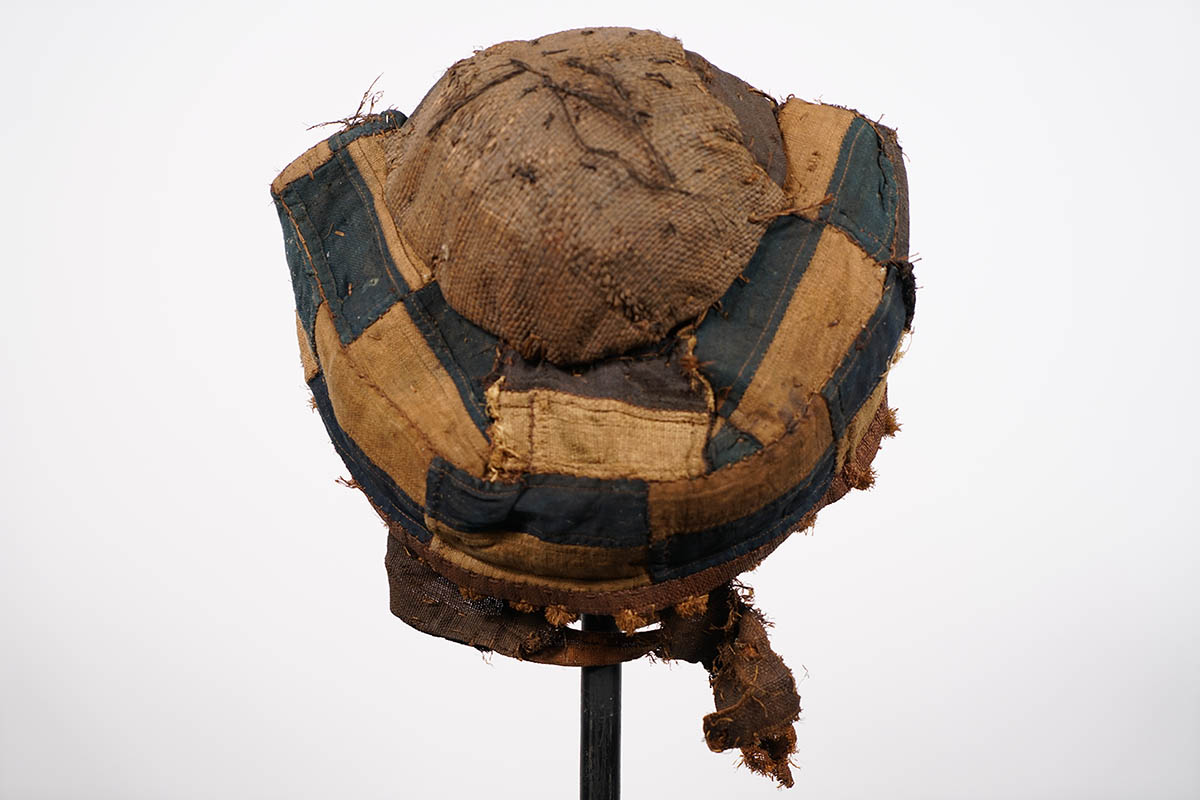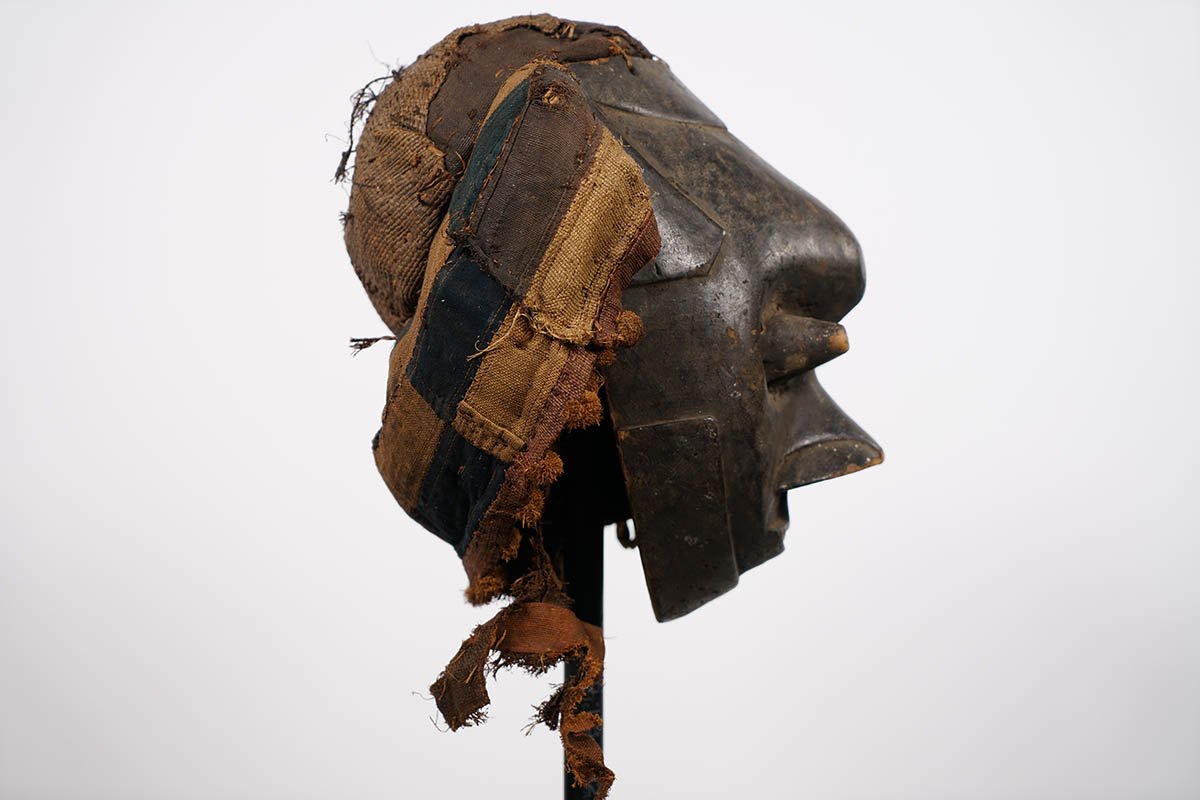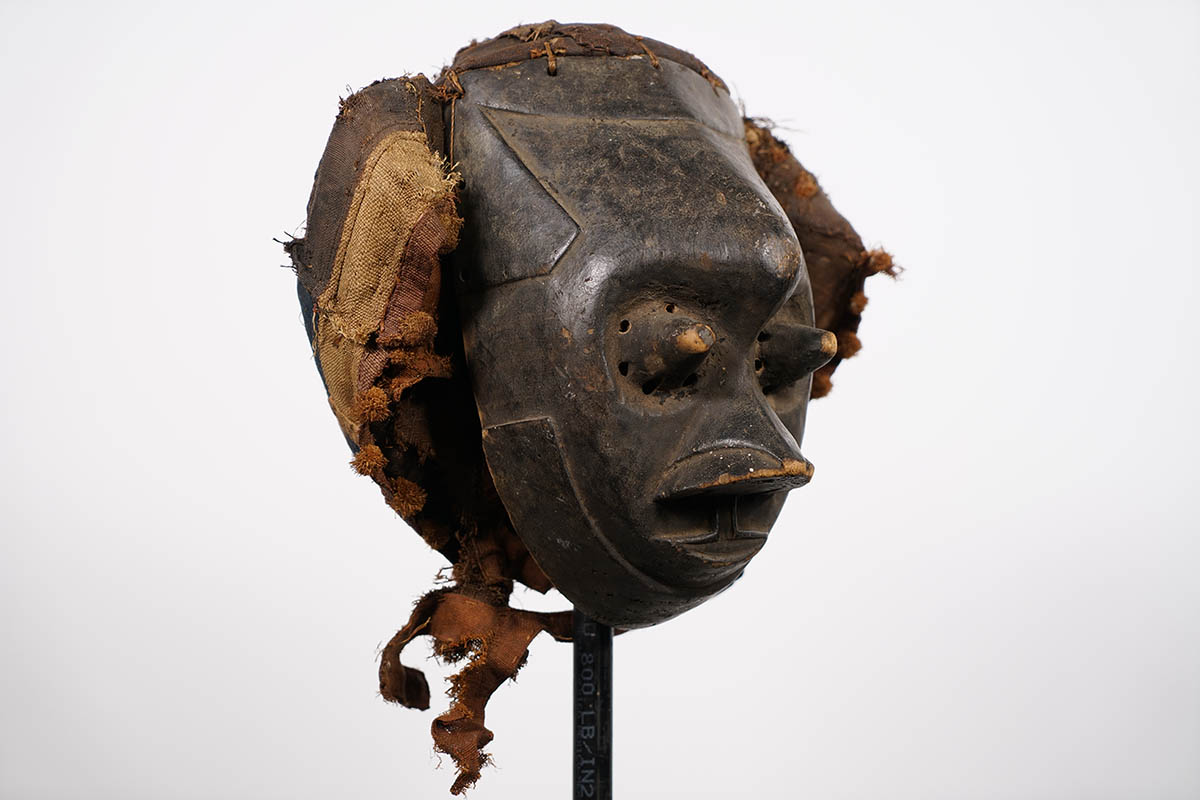This mask was carved in the style of a Pwook Itok mask of the Kuba people of DR Congo. The mask measures 12.5 inches tall and weighs 3 pounds. There is cracking and wear and tear throughout and the fabric is severely tattered – please inspect photos. Stand not included but one can be added for an additional charge.
Kuba Itok Style Mask 12.5″ – DR Congo – African Art
Original price was: $225.00.$157.50Current price is: $157.50.
Sold

| Type of Object | Mask |
|---|---|
| Country of Origin | DR Congo |
| Ethnicity | Kuba |
| Material | Wood, pigment, vegetable fiber, fabric and cowrie shells |
| Approximate Age | Unknown |
| Height | 12.5" |
| Width | 12.5" |
| Depth | 11.5" |
| Weight | 3 lbs |
| Overall Condition | Some cracking and wear and tear. Fabric is tattered. |
Tribe Information
About the Kuba People
“During the 16th century, the Kuba migrated from the north and settled between the Sankuru and Kasai Rivers. Today, they number 250,000 and are subdivided into a number of tribes – the Bushoong, the Ngeende, the Kete, the Lele, the Binji, The Dengese, the Mbuun and the wongo. Each clan pays tribute to the Nyim, the king of the Bushoong ruling clan, but their internal affairs are dealt with autonomously. The Bushoong king and his court lived in a closed palace, known as the Mushenge. The king was responsible for the wealth and fecundity of his people.
Each clan within the Kuba kingdom produced artistic objects with specific characteristics, but there are common stylistic features, including predilection for incised geometric decoration. Cups, zoomorphic divination instruments and boxes were produced throughout the realm.”
Source:
Baquart, Jean-Baptiste. The Tribal Arts of Africa. New York: Thames and Hudson Inc. 1998. Print.
You must be logged in to post a review.
Additional Information
About the Pwoom Itok Mask
The Pwoom Itok is a simple dance mask meant to represent a wise old man. The main characteristic being the conical shaped eyes surrounded by small holes for the dancer to see through. The mask would usually be attached to an extravagant headdress entailing feathers and raffia cloth.







Reviews
There are no reviews yet.